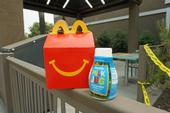- Author: Jeannette E. Warnert

At fast food and sit-down restaurants across California, kids' meals come with water or milk automatically. At least, that should be the case since state law requires restaurants to offer the healthy beverages by default to reduce the amount of sugary beverages served to children.
California Senate Bill 1192, authored by Sen. Bill Monning (D-San Luis Obispo), went into effect Jan. 6, 2019, but research by the UC Nutrition Policy Institute (NPI) has found that implementation has not been universal and more can be done. The results, along with results from a similar study in Wilmington, Del., were...
- Author: Jeannette E. Warnert

When Genoveva Islas was 12 years old, she was responsible for giving insulin injections to her diabetic tia, her aunt.
“Tia lost her toes, lost her leg, lost her life,” Islas said. “This is a very important fight.”
Islas is director of Cultiva La Salud in Fresno, which works to address poor nutrition and physical inactivity in the San Joaquin Valley. The fight Islas referred to is the “soda wars,” a battle to reduce the amount of sugar-sweetened beverages (SSBs) consumed by Americans. SSBs are the single most significant source of sugar in...
- Author: Patricia B. Crawford

According to current statistics, approximately 40 percent of school-age children in the U.S. are overweight or obese. This statistic is reflected in rising rates of diabetes, pre-diabetes, and heart disease risk factors. Nearly one-quarter of all children are pre-diabetic or diabetic at the time when they leave high school, a figure that has increased dramatically in the last decade. Dental problems, the other very common health problem of youth, carry the potential for current and future pain, infection, and tooth loss. Although low-income children and children of color are at particular risk for...



